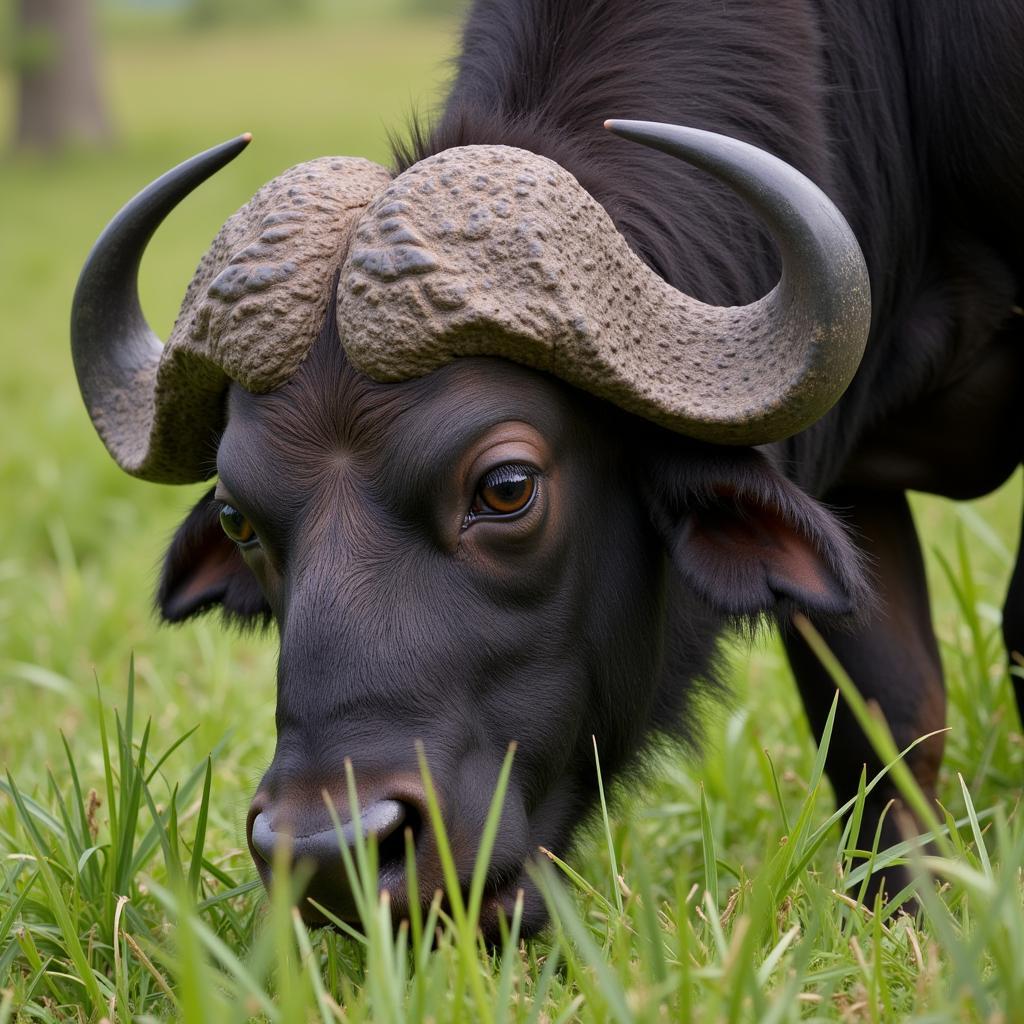Unveiling African Buffalo Facts: A National Geographic Perspective
African buffalo facts, as documented by National Geographic and other reputable sources, reveal a fascinating and complex creature. These powerful bovines, far from being docile grazers, play a vital role in the African ecosystem and represent a formidable force of nature. Their social dynamics, survival strategies, and impact on the environment are all compelling aspects of their existence.
Delving into the World of the African Buffalo
African buffalo, scientifically known as Syncerus caffer, are iconic symbols of the African savanna. Their massive size, distinctive horns, and herd mentality make them a recognizable and intriguing species. They are often found in large herds, sometimes numbering in the hundreds, which provides them with protection against predators like lions and crocodiles.
The Social Structure of African Buffalo Herds
African buffalo herds are complex social structures with a matriarchal hierarchy. Older, experienced females lead the herd, making decisions about grazing areas and migration routes. This social order ensures the survival of the herd by leveraging the wisdom of the elders. The younger calves are protected within the center of the herd, shielded from potential danger.
African Buffalo Facts: Diet and Habitat
African buffalo are herbivores, meaning their diet consists primarily of grasses and other vegetation. They are incredibly efficient grazers, consuming large quantities of plant matter daily, shaping the landscape of their habitat. Their grazing habits have a significant impact on the ecosystem, influencing the distribution of plant species and creating opportunities for other herbivores.  African buffalo grazing in the savanna grasslands
African buffalo grazing in the savanna grasslands
The Importance of Water Sources for African Buffalo
Water is essential for African buffalo survival. They are often found near rivers, lakes, and other water sources, particularly during the dry season. Access to water dictates their movements and plays a crucial role in their overall well-being.
African Buffalo and their Predators
While African buffalo are formidable creatures, they are not without predators. Lions, crocodiles, and hyenas pose the greatest threats, especially to young or vulnerable individuals. However, the buffalo’s defensive tactics, including their tightly knit herd formation and sharp horns, offer substantial protection.
Defensive Strategies of the African Buffalo
When threatened, African buffalo form a protective circle around their young, presenting a united front against predators. Their sharp horns can inflict serious injury, making them a dangerous target even for the most skilled predators. This coordinated defense mechanism highlights their intelligence and strong social bonds.
Conservation Status of the African Buffalo
Despite their resilience, African buffalo face challenges such as habitat loss and disease. Conservation efforts are crucial to ensure the long-term survival of this important species. Understanding their ecological role and the threats they face is critical for developing effective conservation strategies.
Conclusion: The Mighty African Buffalo
African buffalo facts, viewed through a National Geographic lens, paint a vivid picture of a remarkable animal. Their social complexity, ecological impact, and survival strategies make them a truly captivating species. Learning more about these incredible creatures is vital for appreciating their role in the African ecosystem and promoting their continued existence.
FAQ
- What is the average lifespan of an African buffalo? (Around 20 years in the wild).
- How much does an African buffalo weigh? (Between 500 and 1000 kg).
- What are the main predators of African buffalo? (Lions, crocodiles, and hyenas).
- Where do African buffalo live? (Sub-Saharan Africa).
- What do African buffalo eat? (Grasses and other vegetation).
- Are African buffalo dangerous to humans? (Yes, they can be very dangerous if provoked).
- How do African buffalo defend themselves? (By forming a protective circle and using their horns).
See also: african animals for kids
When you need assistance, please contact us at Phone Number: +255768904061, Email: [email protected] Or visit us at: Mbarali DC Mawindi, Kangaga, Tanzania. We have a 24/7 customer service team.
